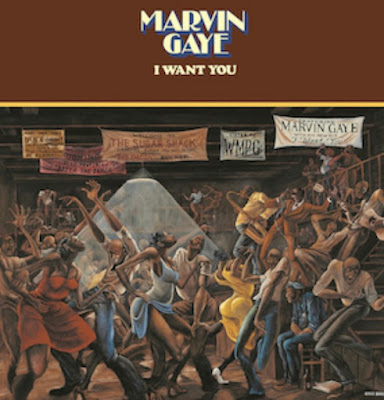Even this old white guy recognized Jimmie Walker although I never watched his Norman Lear sit com. But who knew that Ernie Barnes created this and other art used in the production of Good Times? That would make an excellent "playlist" for a museum exhibit: paintings created specifically for television or film. I'll bet there wouldn't be many as good as these.
 |
| "Portrait of JJ" (1974) |
 |
"Street Song" (1971) |
 |
| "Fumble in the Line" (1990) |
Exaggeration is even more evident in his depictions of basketball, this time in service of elasticity. Without knowing that Barnes produced an exhibition in the '70s called "The Beauty of the Ghetto," I could feel the sense of Black pride that permeates his work.
 |
| "Shootin' the Breeze" (1974) |
 |
"Protect the Rim" (1976) |
This paddle-ball playing young woman has attitude--and legs--to spare.
 |
"Juba Dis an Juba Dat" (1976) |
I usually crop out frames in art photos but this one tells a story. Barnes, who died in 2002 at the age of 70, often used distressed wood in honor of his father, an uneducated man who worked as a shipping clerk for a tobacco company in Durham, NC. Ernest Barnes, Sr. meticulously maintained the white picket fence around the family home until he became sick and died around the time his son first exhibited his work. Ernie, Jr. propped one of his paintings against the fence and discovered how the art and the wood complemented each other, thus beginning a tradition. Although this work isn't a self-portrait it's hard not to see Ernie headed for good times in "The Graduate" (1972), framed by the love for his father.






No comments:
Post a Comment